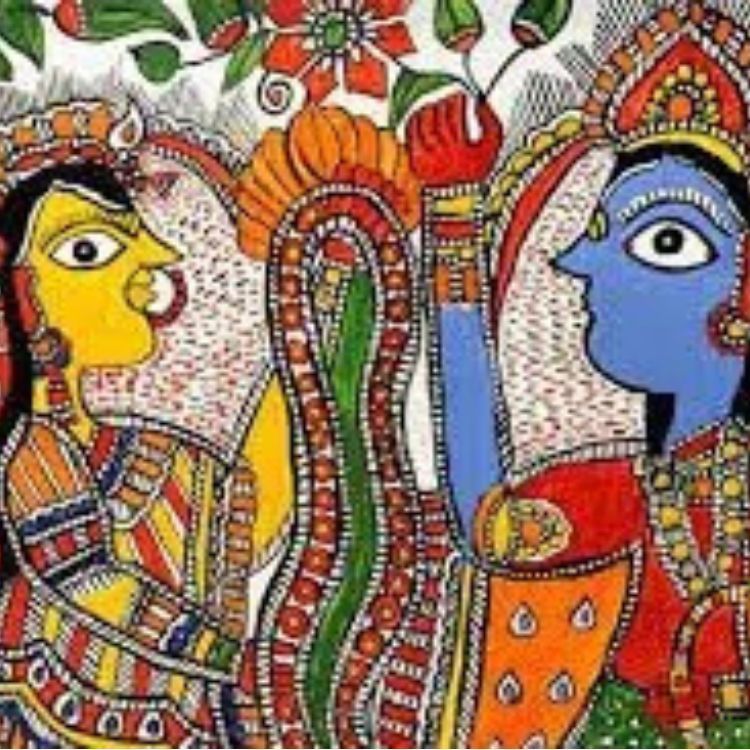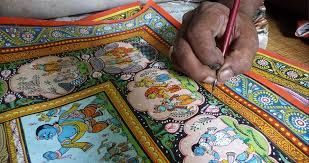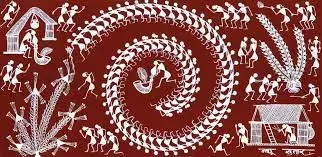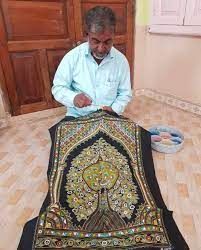Your Cart
Exploring Indian Art Through GI Tags

As Jamini Roy said, "The folk art of India vividly portrays our roots, traditions, and the vibrant life of our communities." Each pocket of the Indian region has its unique artistic expression, often passed down for generations. Apart from being a testament to skilled craftsmanship, the art forms have become the face of India’s cultural identity. With the developments in technology and digitisation, GI (Geographical Indication) tags have emerged as an important tool in identifying various communities. Much like a signature that guarantees authenticity, a GI tag affirms the geographical origin and unique qualities of a product, ensuring that these traditional arts are celebrated and protected. Not just for cultural and authenticity purposes, the GI tags also boost the economic status and safeguard the interest of local communities. Let us explore Indian art through GI tags
**Understanding Geographical Indication (GI) Tags** ---------------------------------------------------
A Geographical Indication (GI) tag is a sign used on products that have a specific geographical origin and possess qualities or a reputation that are due to that origin. In India, the Geographical Indications of Goods (Registration and Protection) Act, 1999, provides legal protection to these goods and prevents unauthorized use of a registered GI. The GI tag not only acknowledges the uniqueness of the product but also helps in its branding and marketing, thereby benefiting the artisans and the local economy.
****The Significance of GI Tags for Traditional and Folk Arts**** -----------------------------------------------------------------
Preservation of Heritage
GI tags help preserve the traditional knowledge and skills associated with these art forms, ensuring that they are not lost over time.
Economic Benefits
By enhancing the marketability of these arts, GI tags provide economic incentives to the artisans, encouraging them to continue their craft.
Prevention of Misuse
GI tags protect these arts from being replicated and sold under pretences, ensuring authenticity and quality.
Cultural Recognition
The recognition of these arts on a global platform fosters a sense of pride and identity among the communities involved.
****Renowned Traditional and Folk Arts of India with GI Tags**** ----------------------------------------------------------------
Madhubani Painting (Bihar)

Originating from the Mithila region of Bihar, this art form is Known for its intricate designs and vibrant colours. Madhubani painting traditionally uses natural dyes and pigments. Themes often include mythology, nature, and social events. The GI tag has helped protect the authenticity of the art form and has provided a boost to local artisans by enhancing market reach. The GI tag granted in 2007 helped in establishing the artisans’ work and differentiated them from imitators.
The tag boosted the confidence of buyers, leading to increased demand both domestically and internationally. Artisans saw a significant rise in their earnings. Government initiatives and collaborations with NGOs have further supported the community through training and financial aid.
Pattachitra (Odisha and West Bengal)

This art form hails from Odisha and West Bengal. Pattachitra is a scroll painting known for its intricate details, mythological narratives, and rich colours. It is traditionally done on cloth or dried palm leaves. The GI tag has ensured the preservation of traditional techniques and has prevented the proliferation of imitations.
Warli Painting (Maharashtra)

This simple artistic expression is Warli, originating from the Warli tribe of Maharashtra. Warli paintings are characterized by their use of basic geometric shapes to depict daily life and nature. Traditionally done on walls, these paintings use a white pigment made from rice paste. The GI tag has provided a platform for Warli artists to gain national and international recognition, improving their livelihoods.
Channapatna Toys (Karnataka)

This interesting craft is named after its region - Channapatna town in Karnataka. These wooden toys are made using traditional lacquering techniques. They are known for their vibrant colours and smooth finish. The GI tag has revived interest in these eco-friendly toys, leading to increased demand and better income for artisans.
Kalamkari (Andhra Pradesh and Telangana)

You must have spotted this art form now and then on apparel and accessories. This popular art form is called Kalamkari and originates from Andhra Pradesh and Telangana. Kalamkari refers to hand-painted or block-printed cotton textiles. The designs often depict epics like Ramayana and Mahabharata. The GI tag has helped in standardizing the quality of Kalamkari products and has opened new markets for artisans.
Rogan Painting (Gujarat)

There is more to Gujarat than the Rann of Kutch, its interesting art form - Rogan painting. It originates from the Kutch region of Gujarat. Rogan painting involves using castor oil-based colours to create intricate designs on fabric. The technique is known for its unique texture and vivid colours. The GI tag has brought global attention to this almost-forgotten art form, providing a new lease on life for the artisans.
****Conclusion**** ------------------
The GI tags play a crucial role in recognizing and preserving these art forms, ensuring that they continue to thrive in the modern world. By supporting GI-tagged products, we contribute to the preservation of our rich cultural heritage and the well-being of the artisans who keep these traditions alive.
GI tagging has proven to be a game-changer for traditional and folk arts in India. By providing legal protection, enhancing marketability, and ensuring authenticity, GI tags have empowered the artisans' community economically and culturally. Supporting GI-tagged products is a step towards sustaining the heritage and livelihoods of these skilled artisans.